 |
|||||||
|
HOME
|
US Navy -
ships
|
US Navy - air
units
|
USMC - air
units
|
International
Navies
|
Weapon Systems
|
Special Reports |
|||||||
|
|
|||||||
|
|
|||||||
|
US Navy - Attack Squadron 195
(ATKRON 195) VA-195 'Dambusters' |
|||||||
|
|
|||||||
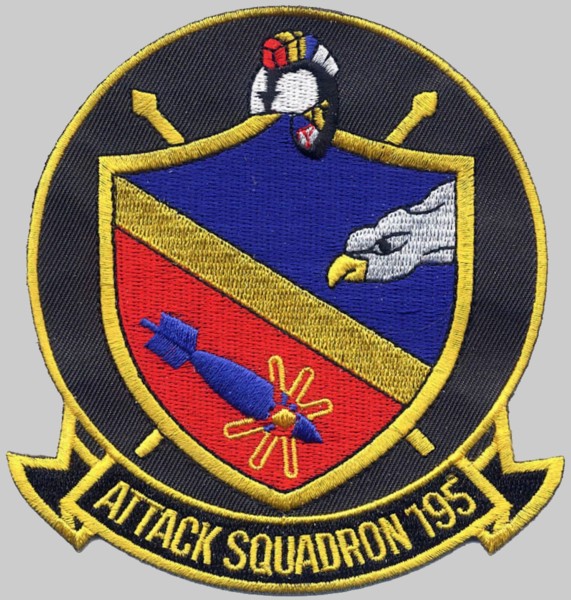 |
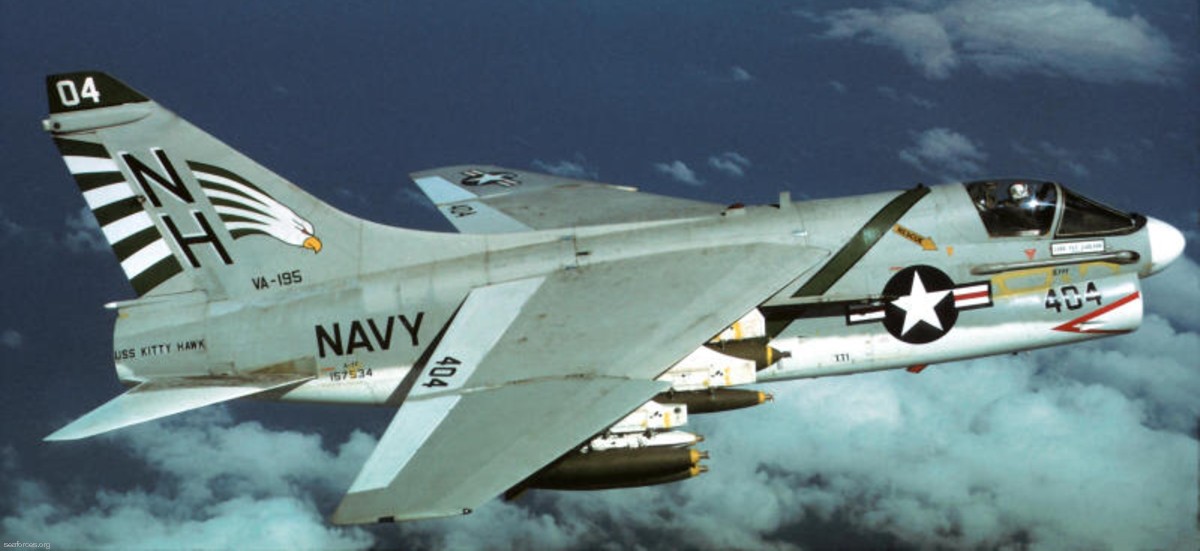 |
||||||
|
|
|||||||
|
|||||||
|
|
|||||||
| images | |||||||
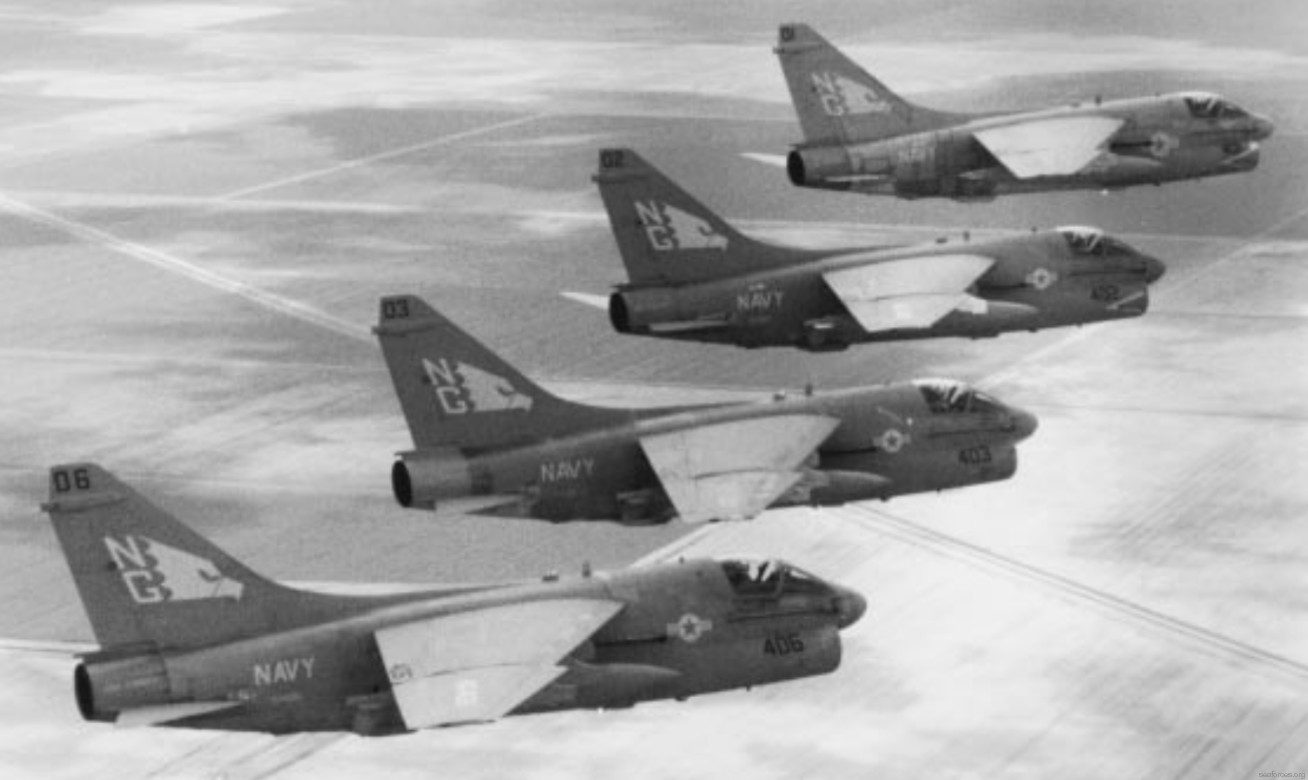 A-7E Corsair II (VA-195 / CVW-9) embarked on USS Ranger (CV 61) - circa 1982-83 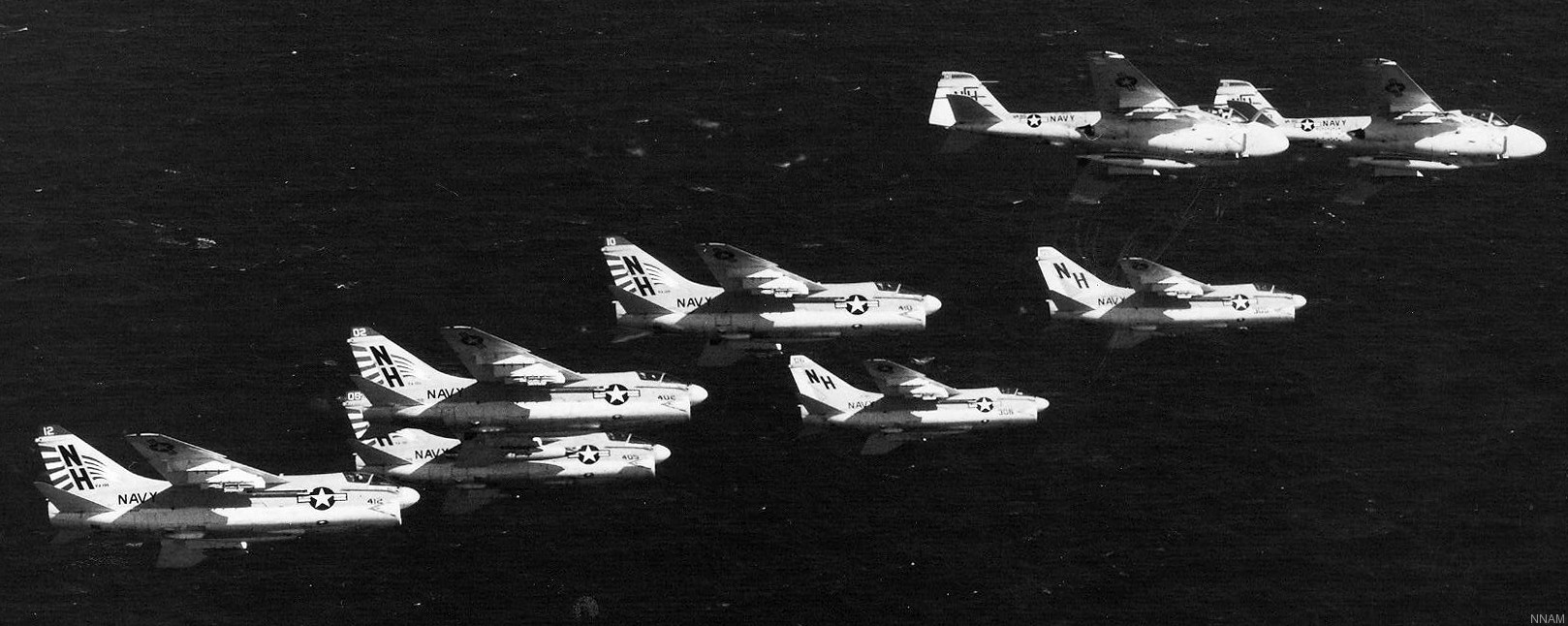 A-7E Corsair II's, 4xx (VA-195) embarked on USS America (CV 66) in flight over the Mediterranean Sea with other aircraft of CVW-11 - 1979 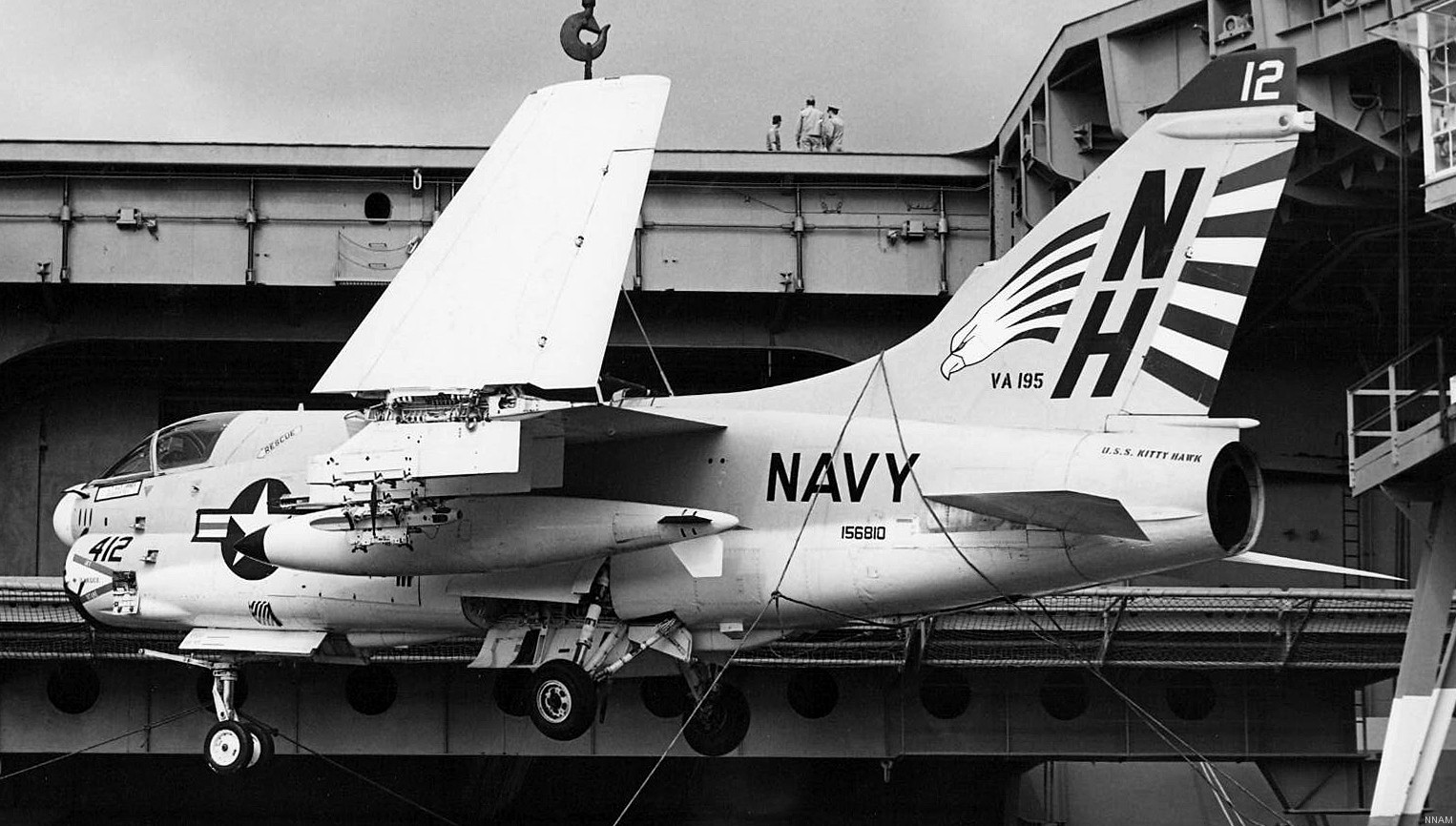 A-7E Corsair II (VA-195 / CVW-11) were loaded onto USS Kitty Hawk (CV 63) - NAS North Island, California - 1977 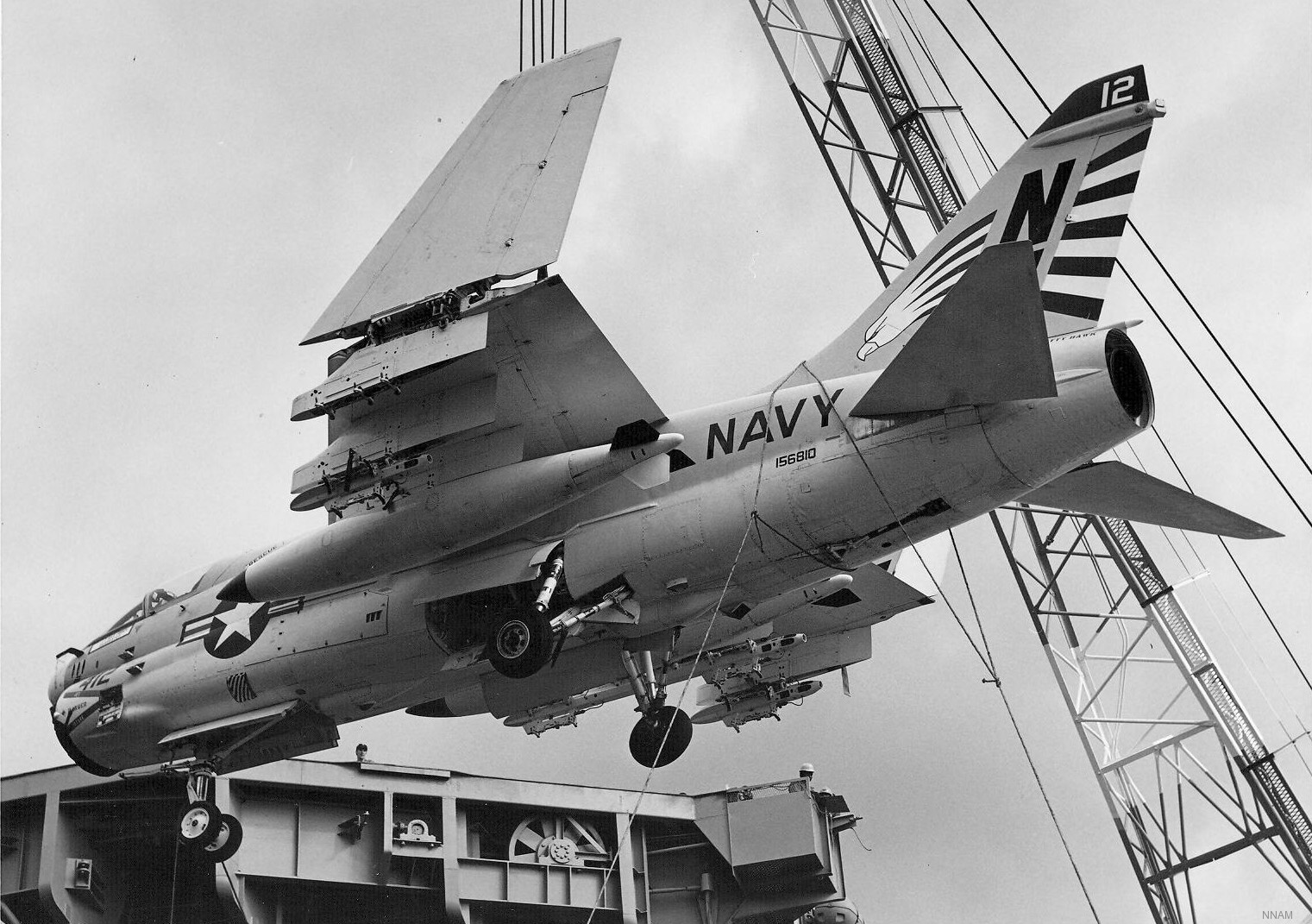 A-7E Corsair II (VA-195 / CVW-11) were loaded onto USS Kitty Hawk (CV 63) - NAS North Island, California - 1977 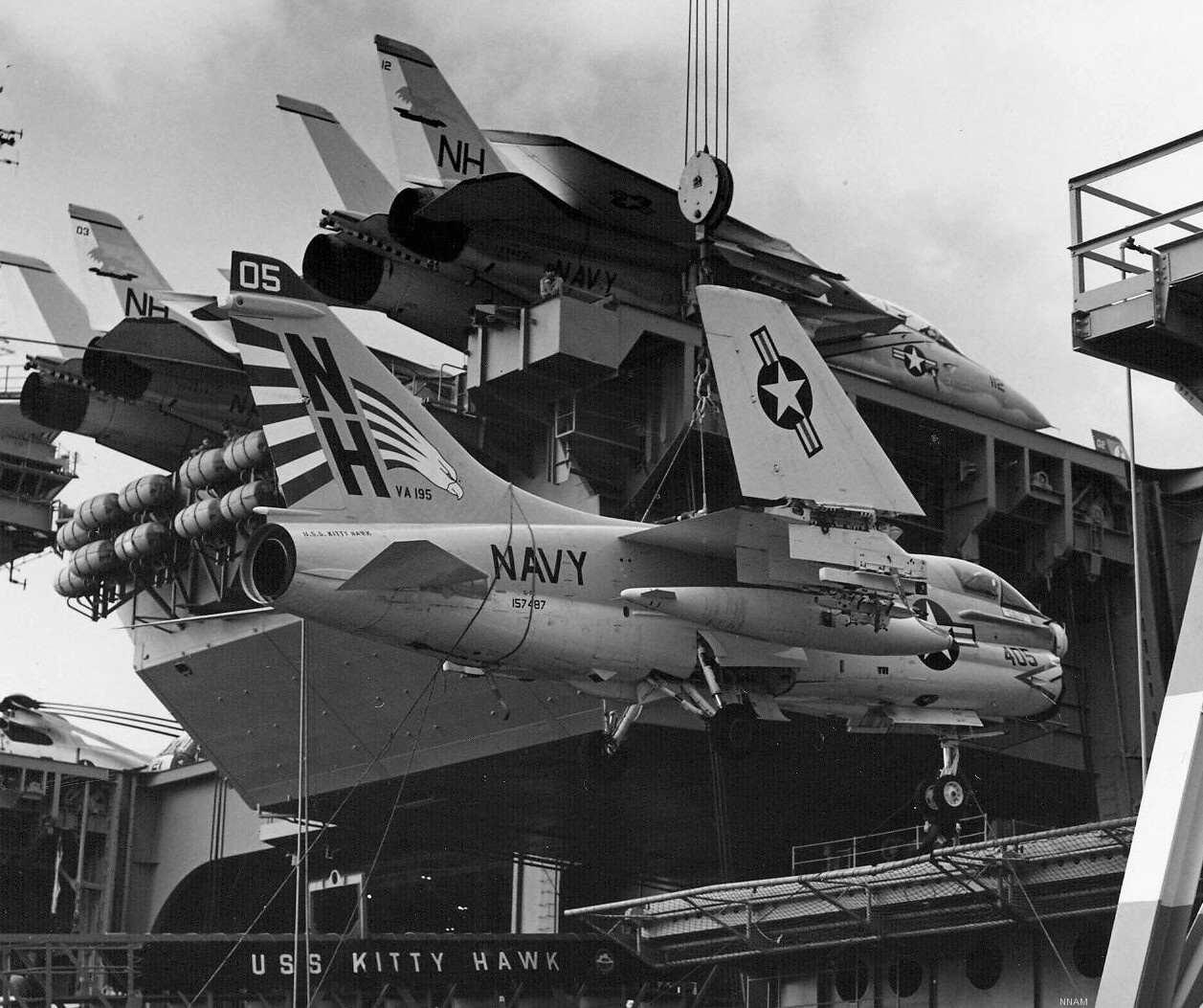 A-7E Corsair II (VA-195 / CVW-11) were loaded onto USS Kitty Hawk (CV 63) - NAS North Island, California - 1977 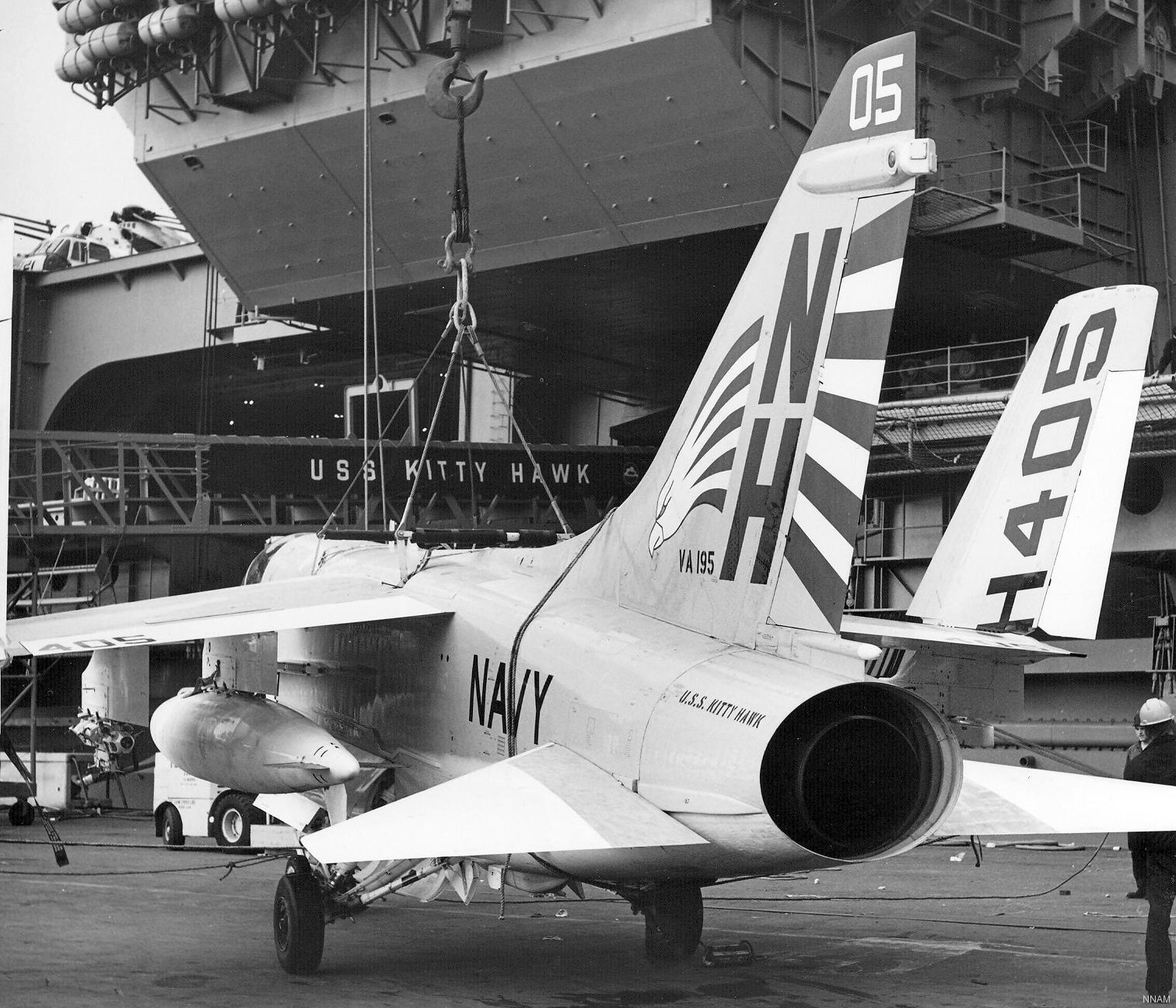 A-7E Corsair II (VA-195 / CVW-11) were loaded onto USS Kitty Hawk (CV 63) - NAS North Island, California - 1977 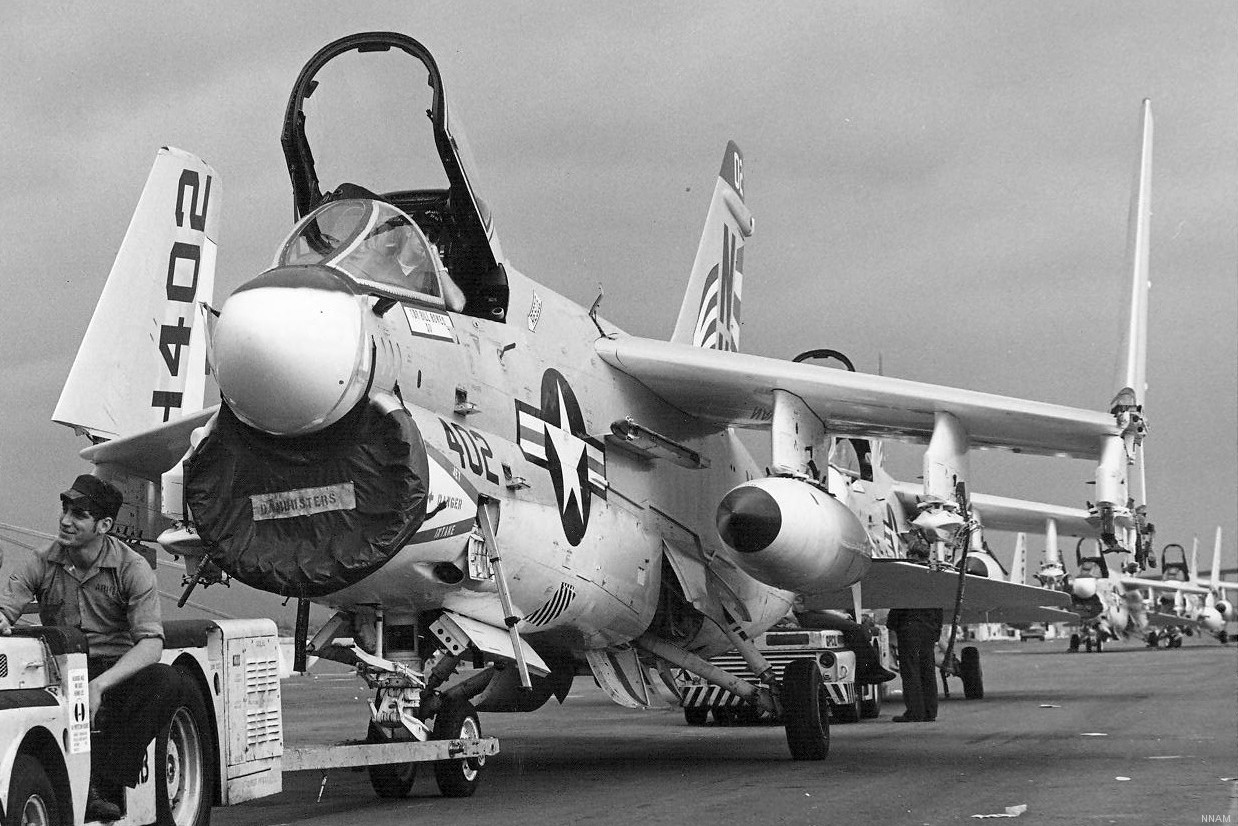 A-7E Corsair II (VA-195 / CVW-11) were loaded onto USS Kitty Hawk (CV 63) - NAS North Island, California - 1977 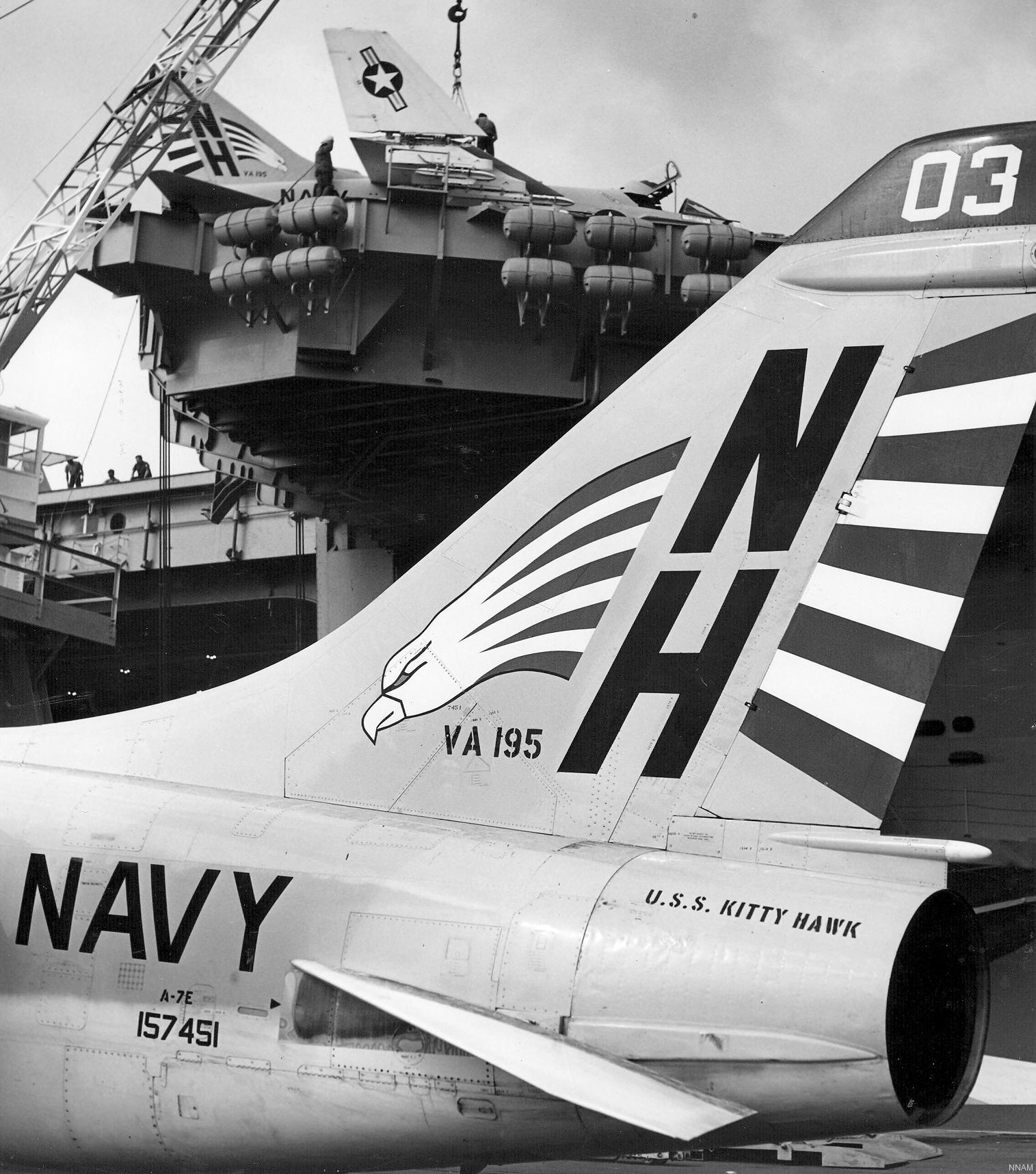 A-7E Corsair II (VA-195 / CVW-11) were loaded onto USS Kitty Hawk (CV 63) - NAS North Island, California - 1977 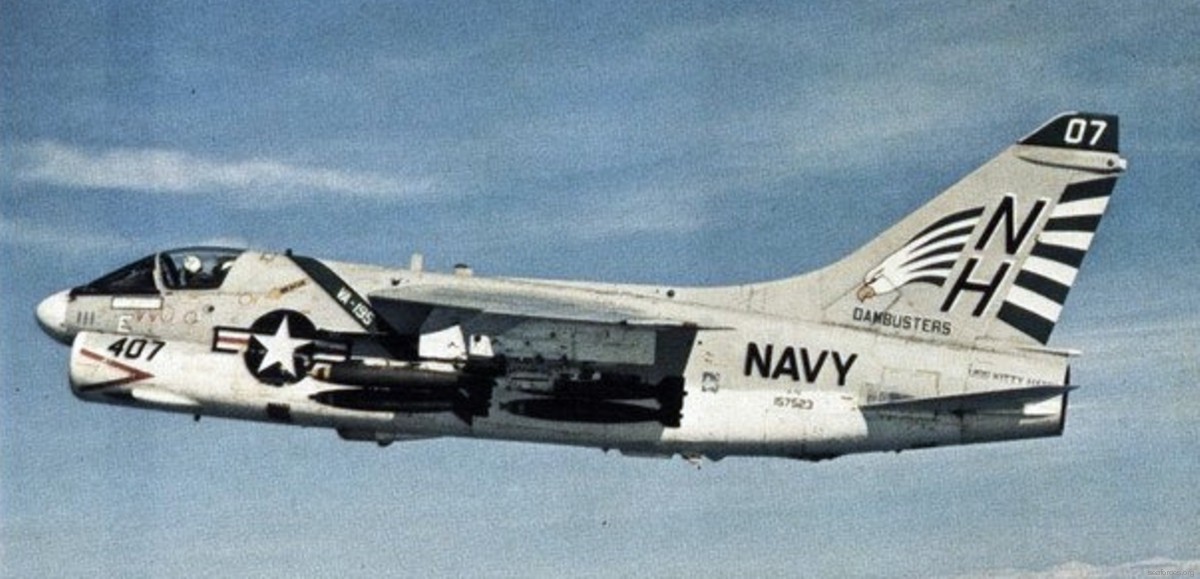 A-7E Corsair II (VA-195 / CVW-11) embarked on USS Kitty Hawk (CVA 63) - 1972 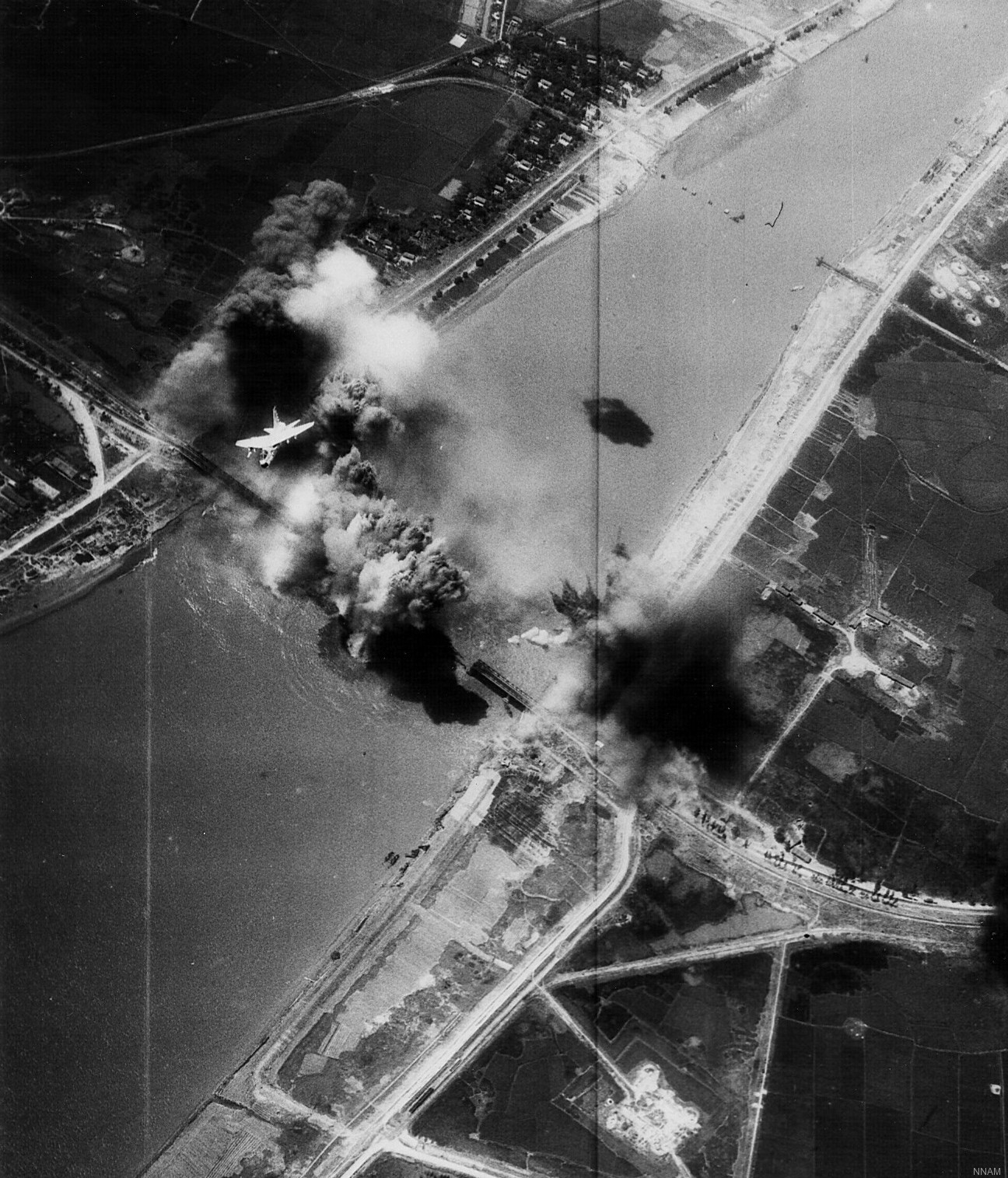 A-7E Corsair II (VA-195 / CVW-11) embarked on USS Kitty Hawk (CVA 63) bombs the Hai Duong railway and highway bridge in North Vietnam - May 10, 1972  A-7E Corsair II (VA-195 / CVW-11) embarked on USS Kitty Hawk (CVA 63) - 1971 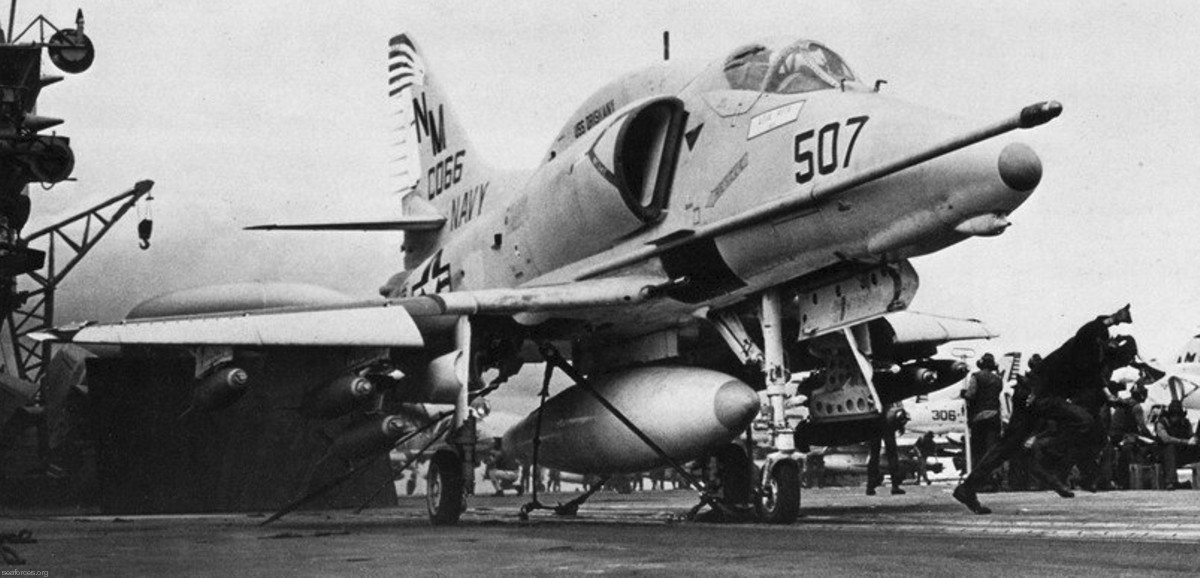 A-4E Skyhawk (VA-195 / CVW-19) embarked on USS Oriskany (CVA 34) - 1969 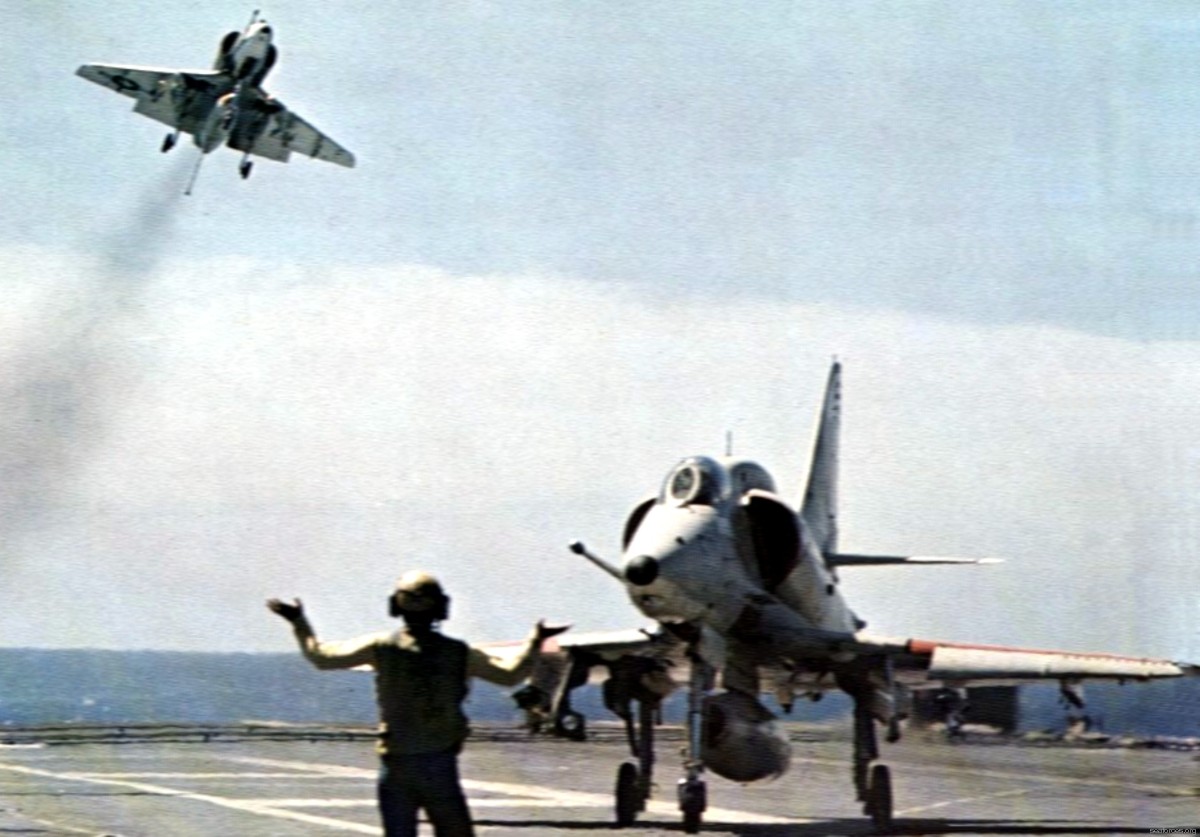 A-4E Skyhawk (VA-195 / CVW-19) embarked on USS Oriskany (CVA 34) - 1969 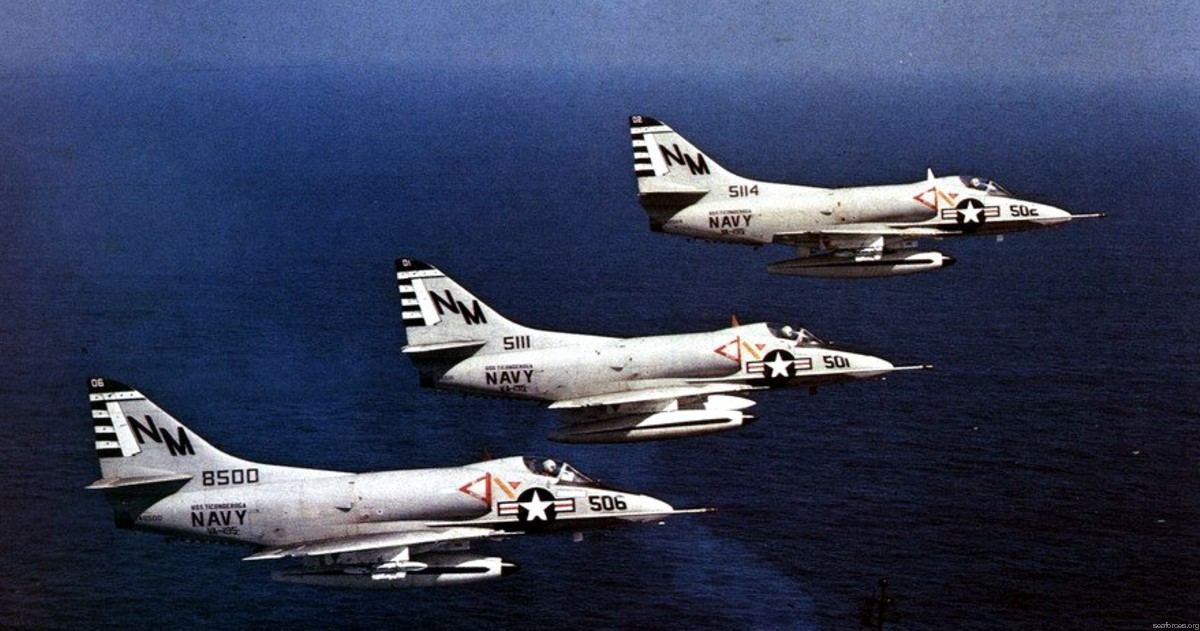 A-4C Skyhawk (VA-195 / CVW-19) embarked on USS Ticonderoga (CVA 14) - 1968 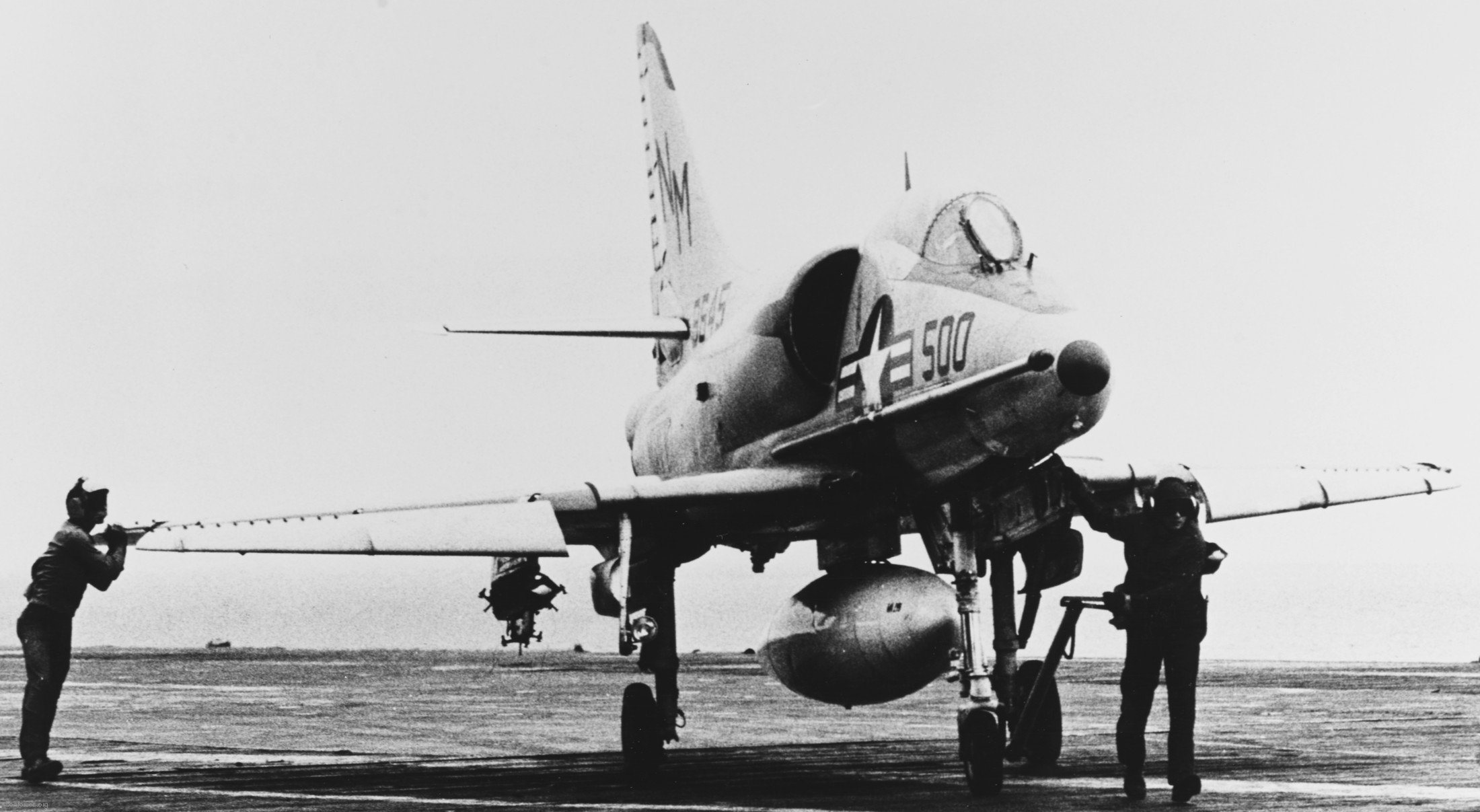 A-4C Skyhawk (VA-195 / CVW-19) embarked on USS Ticonderoga (CVA 14) - 1967 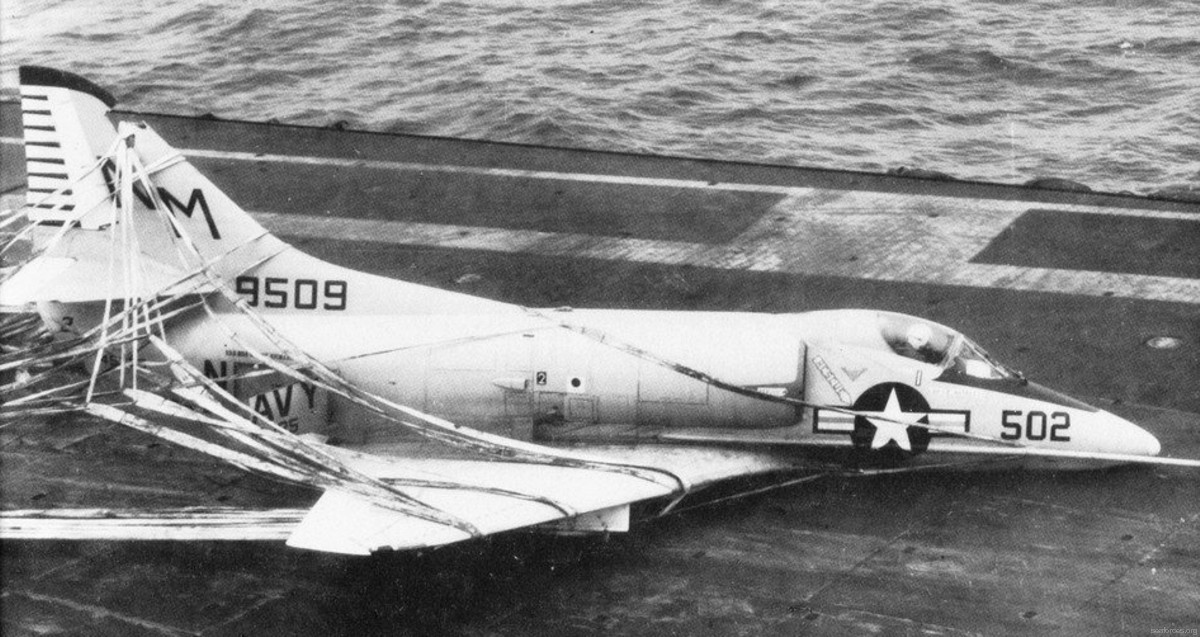 A-4C Skyhawk (VA-195 / CVW-19) after a barrier landing aboard USS Bon Homme Richard (CVA 31) - circa 1965 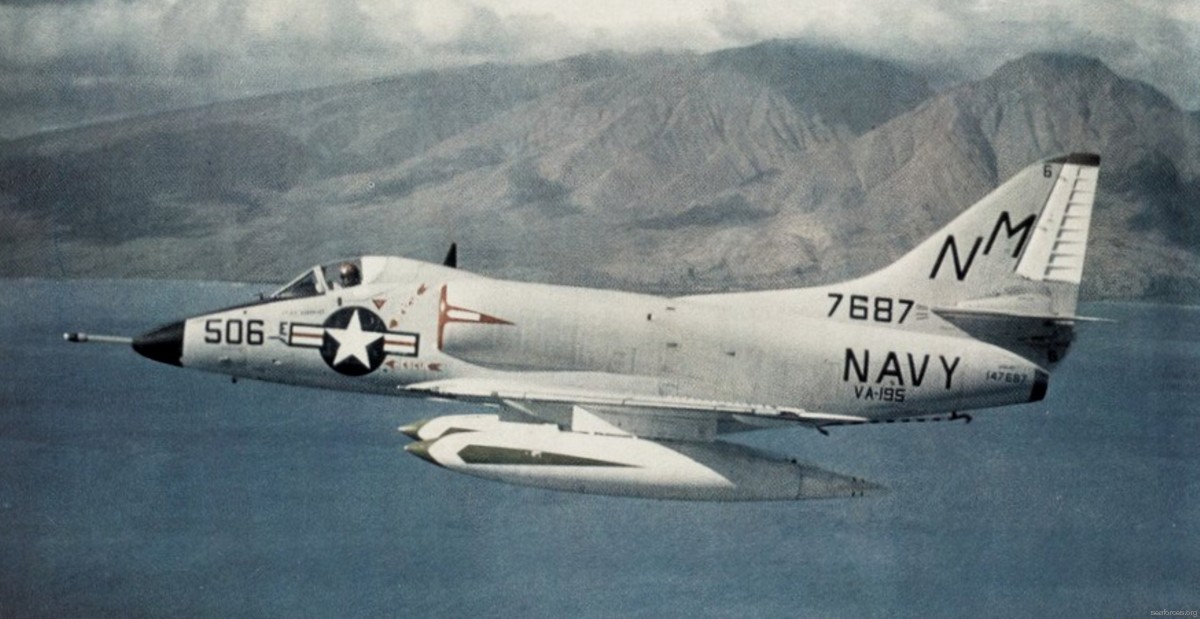 A4D-2N Skyhawk (VA-195 / CVG-19) embarked on USS Bon Homme Richard (CVA 31) - circa 1962 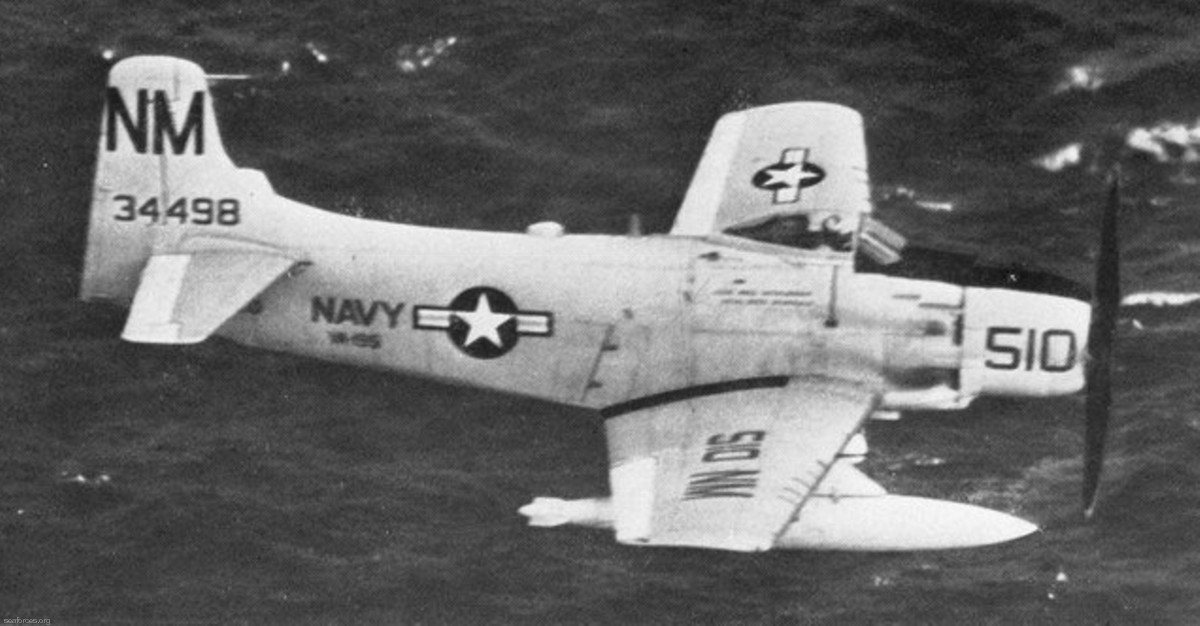 AD-6 Skyraider (VA-195 / CVG-19) embarked on USS Bon Homme Richard (CVA 31) - 1959 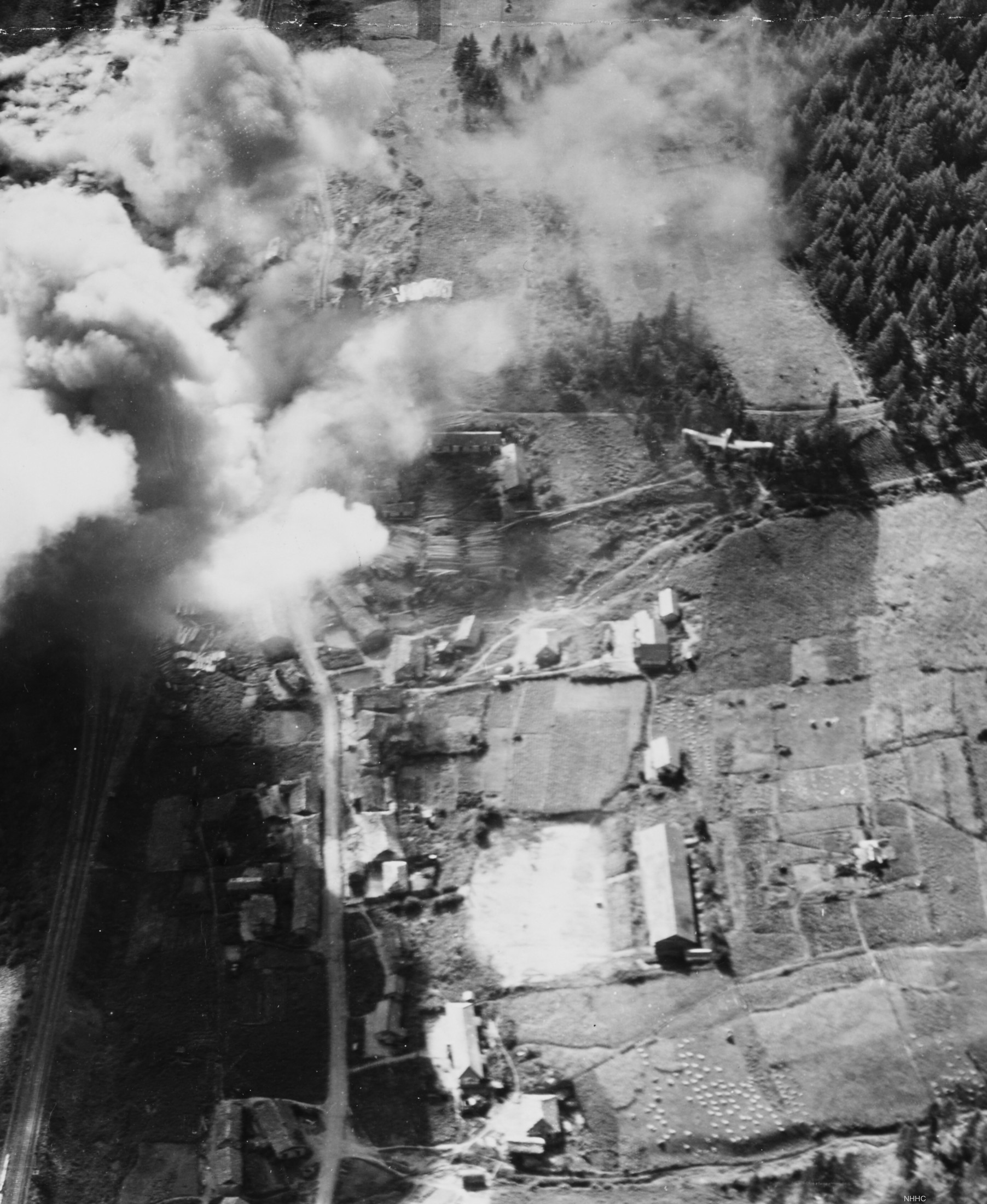 AD-4 Skyraider (VA-195 / CVG-19) embarked on USS Princeton (CV 37) attack a North Korean lumber mill - August 1952 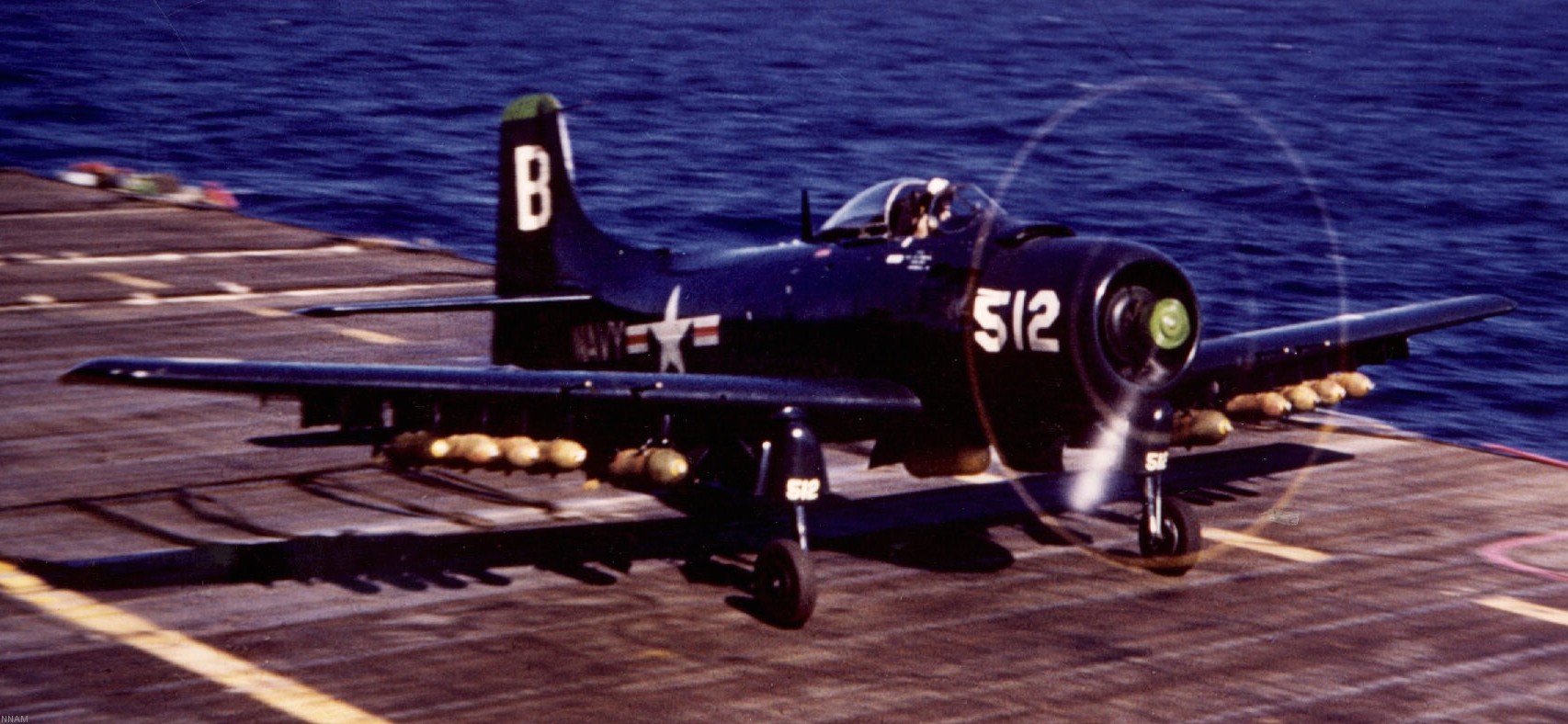 AD-4 Skyraider (VA-195 / CVG-19) embarked on USS Princeton (CV 37) - circa 1951 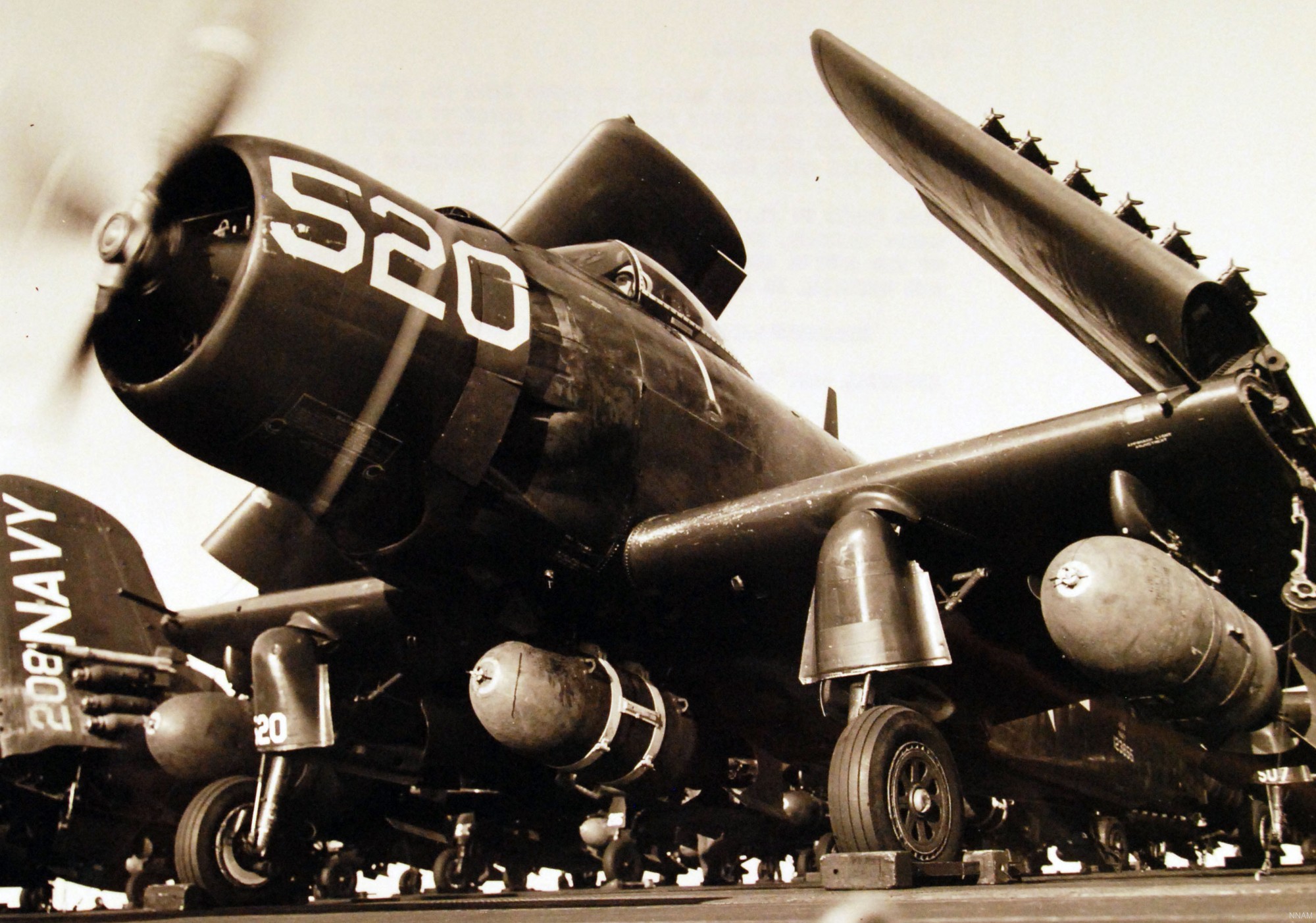 AD-4 Skyraider (VA-195 / CVG-19) embarked on USS Princeton (CV 37) - May 1951 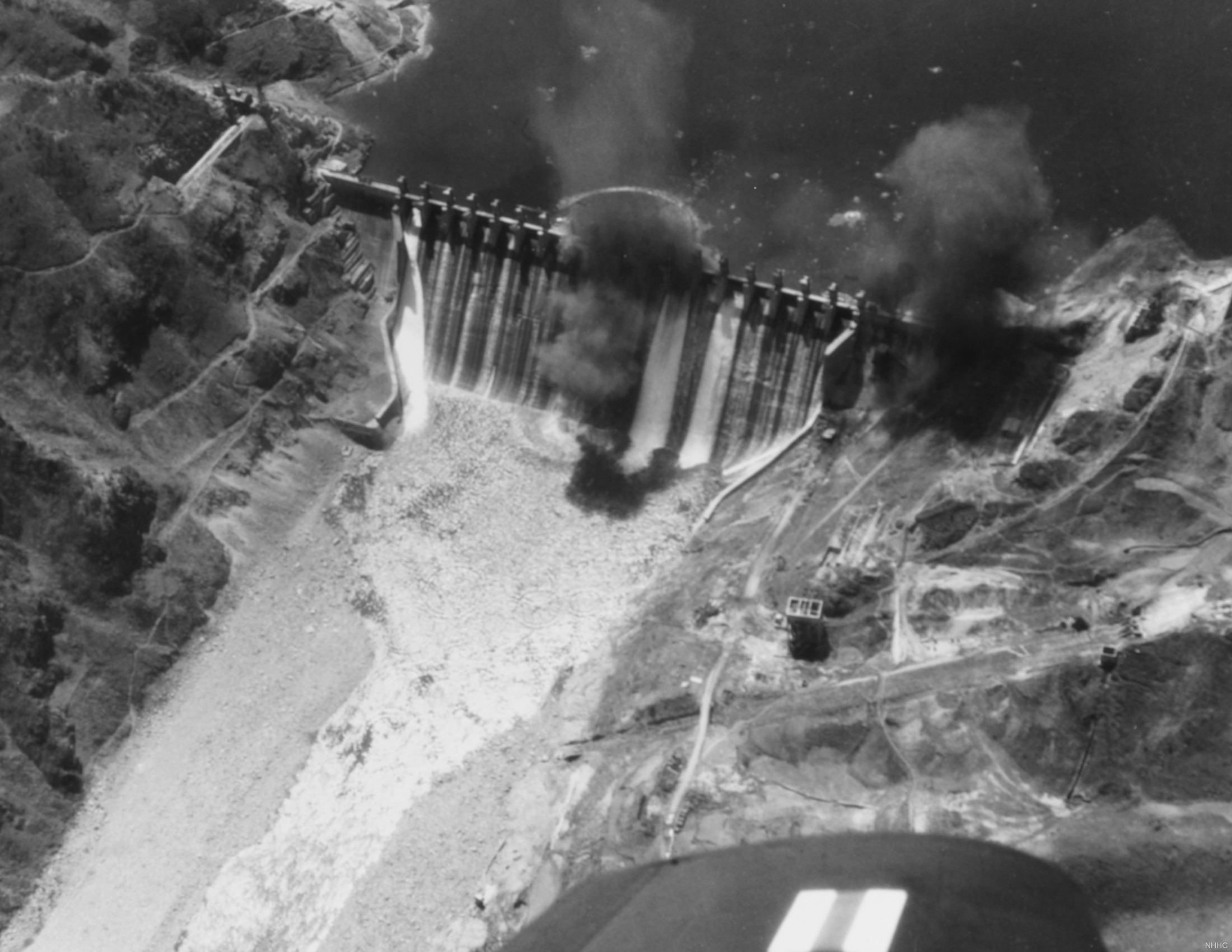 Torpedo attack on the Hwachon Reservoir dam by AD-4 Skyraiders (VA-195 / CVG-19) from USS Princeton (CV 37) - 1 May 1951 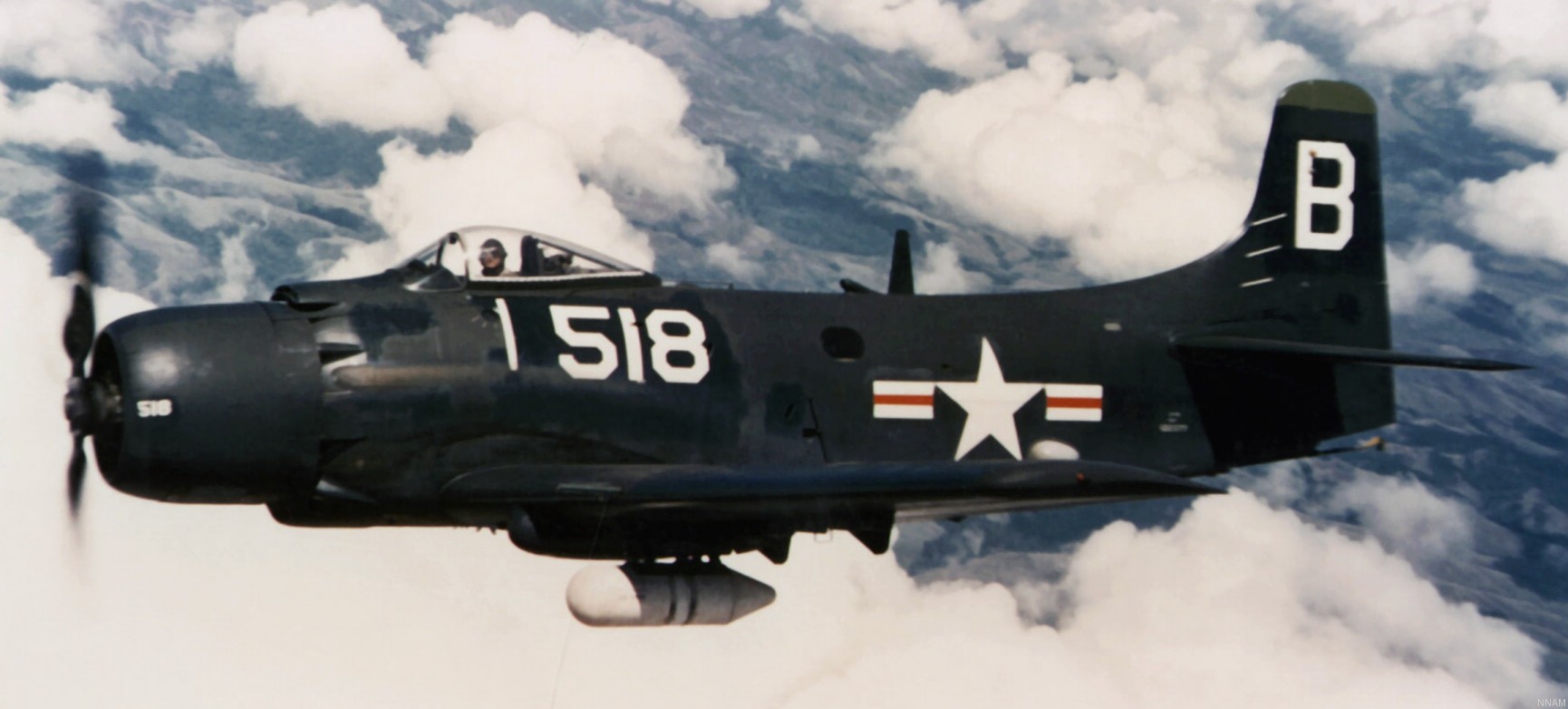 AD-2Q Skyraider (VA-195 / CVG-19) embarked on USS Boxer (CV 21) - circa 1950 |
|||||||
|
|
|||||||
|
VA-195 History: Attack Squadron ONE NINE FIVE was originally commissioned as the “Tigers” of Torpedo Squadron NINETEEN (VT-19) at Los Alamitos, California, in August 1943. The squadron was subsequently redesignated as Attack Squadron TWENTY (VA-20A) in November 1946, Attack Squadron ONE NINE FIVE (VA-195) in August 1948, and Strike Fighter Squadron ONE NINE FIVE (VFA-195) on 1 April 1985. VT-19 originally flew the Eastern TBM Avenger from USS LEXINGTON as part of Carrier Group 19, Admiral Bull Halsey’s naval force during World War II. During this period, the squadron participated in the Battle of Leyte Gulf and in support of the landings on Guam, Palau, Morotai, and Leyte. VT-19 also flew strikes against the Philippines, Bonin Island, Okinawa, Mindanao, and Formosa through the end of the war in 1954. VT-19 was redesignated VA-20A following World War II, on 15 Nov 1946. In May 1947, VA-20A transitioned to the Douglas AD-1 Skyraider, before being subsequently redesignated VA-195 on 24 Aug 1948. The squadron deployed aboard USS PRINCETON and was heavily engaged during the Korean War, conducting actions that included close air support missions for U.S. Marines trapped near the Chosin Reservoir from 1950-1951. During this period they earned their new nickname, “Dambusters”, when their Douglas AD-4 Skyraiders delivered precise low-level aerial torpedoes against the heavily defended and strategically positioned Hwachon Resevoir dam in North Korea on 1 May 1951. Widely considered as one of the most extraordinary strikes of the war, destruction of the dam flooded the valley below, protecting allied flanks while denying the North Koreans control of the reservoir’s waters for the remainder of the war. VA-195 subsequently transitioned to the jet powered Douglas A-4 Skyhawk in July 1959, and moved to Naval Air Station Lemoore, California, in 1962. The Vietnam War again engaged the Dambusters in repeated western Pacific deployments, beginning with special operations in 1964 and continuing through a strike against a thermal power plant in 1967. In the spring of 1970, VA-195 transitioned to the Vought A-7E Corsair II as part of Carrier Air Wing ELEVEN aboard USS KITTY HAWK, and continued their participation in the Vietnam War right up to the communist invasion of South Vietnam in 1972. The Dambusters were redesignated Strike Fighter Squadron ONE NINE FIVE on 1 April 1985 and commenced transition to the F/A-18 Hornet. VFA-195 website - - - - - another history: The squadron, originally known as the Tigers, had its first insignia approved by Chief of Naval Operations (CNO) on 4 March 1944, consisting of a lion cub riding a torpedo. Bob Burns gave the squadron a lion cub. On the patch the cub is holding the musical "bazooka" that Burns used in his act, while riding a torpedo. The lion went to the Los Angeles Zoo. A new design replaced the cub with a tiger and parrot on the torpedo, and was approved on 18 April 1949. Sometime in the 1950s, the squadron adopted a shield insignia that featured an eagle's head and a torpedo. On 1 May 1951, squadron aircraft disabled the heavily defended Hwacheon Dam in North Korea, earning them the nickname Dambusters, echoing the original Dam Busters of No. 617 Squadron RAF. Destruction of the dam had been previously attempted by other units many times. In August 1985, the squadron adopted the stylized eagle on green background insignia in use today. History: Torpedo Squadron 19 (VT-19) was established at NAAS Los Alamitos, California on 15 August 1943, flying the TBM-1 Avenger. As unit of Carrier Air Group 19 during World War II, it was a part of Admiral Bull Halsey's Naval Task Force. On 18 July 1944, the squadron flew its first combat mission when it conducted pre-invasion strikes against Guam. The squadron participated in the Battle of Leyte Gulf striking the Japanese Northern Force composed primarily of aircraft carriers, resulting in 25 Navy Cross awards. The squadron supported the landings at Palau, Morotai and Leyte. Squadron pilots also flew strikes against the Carolines, Philippines, Bonin Islands, Okinawa, Mindanao, Luzon, and Formosa while embarked on USS Lexington. In October 1944, squadron aircraft participated in strikes against the Central Japanese Task Force in the Sibuyan Sea, which included the super battleship Musashi. Three of the squadron's personnel were awarded the Silver Star for their actions during this strike. On 5 November 1944, squadron aircraft participated in the sinking of Nachi, a Japanese heavy cruiser, which was making a sortie out of Manila Bay. The squadron changed homeports several times during the Second World War, first to NAS San Diego, then to NAS Alameda, NAAS Santa Rosa, California, and NAS Barbers Point before finally ending up back at NAS Alameda in August 1946. VT-19 also upgraded their Avengers throughout the war, to the TBM-3 in February 1945, the TBM-3E in April 1945, and finally the TBM-3Q. On 15 November 1946, the squadron was redesignated Attack Squadron 20A (VA-20A). In May 1947, the squadron transitioned to the AD-1 Skyraider. In August 1948, VA-20A upgraded to the AD-2 and was redesignated Attack Squadron 195 (VA-195). In January 1949, the squadron upgraded again to the AD-3. 1950s VA-195 upgraded to the AD-4 in July 1950, and served in the Korean War while embarked on USS Princeton. On 5 December 1950, the squadron flew its first combat mission since the end of World War II, flying close air support missions for U.S. Marines near Chosin Reservoir in North Korea. On May 1, 1951, the squadron’s Skyraiders, making precise low level runs, delivered aerial torpedoes on the heavily defended and strategically positioned Hwacheon Dam in North Korea. Destruction of the dam had been attempted by Air Force and Navy bombers, but was finally accomplished by VA-195, earning them the nickname the Dambusters. The squadron upgraded to the AD-4L, and on 23 June 1952, the squadron conducted coordinated air strikes against the Suiho hydroelectric plant on the Yalu River and the Kyosen Number Three hydroelectric plant. Squadron aircraft participated in attacks against other hydroelectric plants the following day. On 11 July 1952, squadron aircraft participated in one of the major joint U.S. Navy, Air Force and Marine Corps air strikes of the war, hitting industrial targets in North Korea’s capital city of Pyongyang. In November 1952, the squadron relocated to NAS Moffett Field, and upgraded to the AD-4B and AD-4NA in early 1953. VA-195 received AD-6s in May 1954, and finally moved to the jet age with A4D-2 Skyhawks (later designated A-4B) in July 1959. 1960s In December 1961, the squadron moved to NAS Lemoore, California. As the Vietnam War flared in the fall of 1964, the squadron made their fourth consecutive deployments on USS Bon Homme Richard. During the next five years, while operating various models of the A-4 from the decks of Bon Homme Richard and USS Ticonderoga, the squadron logged more combat flight hours and sorties than any other squadron in Carrier Air Wing 19 (CVW-19). On 20 April 1967, the squadron's executive officer was awarded the Silver Star for his actions in planning and executing a successful strike against a Haiphong thermal power plant, accomplishing the mission without the loss of a single aircraft. In March 1968, VA-195, along with other squadrons in CVW-19, conducted flight operations from USS Ticonderoga in the Sea of Japan following the capture of USS Pueblo by North Korea. In September 1968, the squadron upgraded to the A-4E. 1970s In early 1970 VA-195 transitioned to the A-7E Corsair II. As a unit of Carrier Air Wing 11 on USS Kitty Hawk, the squadron deployed in late 1970, marking its fourth consecutive decade of involvement in foreign conflicts. In May 1972, the squadron participated in Operation Pocket Money, the mining of North Vietnamese harbours and Operation Linebacker, concentrated air strikes against targets in North Vietnam above the 20th parallel. On July 19, 1972 the squadron delivered the first data link version of the television guided Walleye Glide Bomb into a cave storage area causing its complete destruction. Later the same day, they destroyed the Ninh Bình railroad bridge, also with a single weapon. In November 1973, VA-195 deployed with CVW-11 embarked on USS Kitty Hawk as part of the first CV concept air wing deployment on the West Coast. This concept consolidated all aspects of carrier aviation warfare into one air wing deployed on an aircraft carrier. The most important difference was the integration of the anti-submarine squadrons (VS) into the former Attack Carrier Air Wing, as the old Essex-class anti-submarine carriers (CVS) and their Anti-Submarine Carrier Air Groups (CVSG) were retired. Between 1970 and 1981 VA-195 made seven deployments with CVW-11 aboard USS Kitty Hawk. The 1979 deployment led CVW-11 in unfamiliar waters, as it was deployed to the Mediterranean Sea, followed by the 1981 cruise to the same area and the Indian Ocean. 1980s In 1981, the squadron made back-to-back deployments aboard USS America. In 1983/84 VA-195 made its last deployment with the A-7 Corsair II, this time being reassigned to the Pacific Fleet CVW-9 aboard USS Ranger. From July to August 1983, USS Ranger was ordered to operate off the coast of Nicaragua in response to an unstable situation in Central America. Then, from October 1983 to January 1984, during a 122-day line period in the Indian Ocean, USS Ranger was extended on station in the Arabian Sea due to the Iranian threat to block oil exports from the Persian Gulf. VA-195 was redesignated Strike Fighter Squadron 195 (VFA-195) on 1 April 1985 and commenced transition to the F/A-18A Hornet. The first of 12 new Lot 8 F/A-18As were delivered to the squadron in October, 1985. source: wikipedia - - - - - more information: Established as Torpedo Squadron NINETEEN (VT-19) on 15 August 1943 Redesignated Attack Squadron TWENTY A (VA-20A) on 15 November 1946 Redesignated Attack Squadron ONE HUNDRED NINETY FIVE (VA-195) on 24 August 1948 Redesignated Strike Fighter Squadron ONE HUNDRED NINETY FIVE (VFA-195) on 1 April 1985 The first squadron to be assigned the VA-195 and VFA-195 designation Chronology of Significant Events: 18 Jul 1944: The squadron flew its first combat mission when it conducted pre-invasion strikes against Guam. Jul-Oct 1944: The squadron flew combat strikes against Guam, Palau, the Bonin and Volcano Islands, Mindanao, Visayans, Luzon, Okinawa and Formosa. 24 Oct 1944: Squadron aircraft participated in strikes against the Central Japanese Task Force in the Sibuyan Sea, which included the super battleship Musashi. Three of the squadron’s personnel, Lieutenants Joseph C. Black and Max E. Gregg and Lieutenant (jg) Edward H. Schulke, were awarded the Silver Star for their actions during this strike. 25 Oct 1944: Squadron aircraft participated in the Battle Off Cape Engano, strikes against the Japanese Northern Force composed primarily of carriers. The following squadron personnel were awarded the Navy Cross for their actions during this battle: Lieutenant Commander Frank C. Perry; Lieutenants Leonard R. Prater, Joseph C. Black, Max E. Gregg, Frederick Doll, Jr., James C. West, Leonard P. Mathias, Donald W. McMillan, Richard D. Greer, Jr., and Gordon B. Whelpley; Lieutenant (jg)s Frank A. Fox, Morris R. Goebel, James H.Langrall, Ray J. Stacy, Robert F. Durian, William R. Garrett, John S. McDonald, Edward H. Schulke, Edward C. Myers, Jr., Irvin Kramer, Jr. and James E. Sipprell; and Ensigns Mercer L. Jackson, Jr., Wallace F. Leeker, Frederick Schuler and Warner W. Tyler. 5 Nov 1944: Squadron aircraft participated in an attack on the Nachi, a Japanese heavy cruiser, which was making a sortie out of Manila Bay. The cruiser was sunk and Lieutenant (jg)s Robert F. Durian, James E. Sipprell and Ray J. Stacy were awarded a Gold Star in lieu of their second Navy Cross for their actions in this engagement. Lieutenant Joseph C. Hebert was awarded a Navy Cross for actions in this strike. 5 Dec 1950: The squadron flew its first combat mission since the end of World War II, flying close air support missions for U.S. Marines near Chosen Reservoir in North Korea. 1 May 1951: The squadron’s AD-4 Skyraiders made a torpedo strike against the flood gates of the Hwachon Reservoir Dam. The purpose of the mission was to destroy the flood gates and raise the level ofthe river to form a natural barrier against the enemy’s advance. It was from this mission that the squadron derived its nickname, Dambusters. 23 Jun 1952: The squadron, along with units from two other carrier air groups and the Fifth Air Force, conducted coordinated air strikes against the Suiho hydroelectric plant on the Yalu River and the Kyosen Number Three hydroelectric plant. Squadron aircraft participated in attacks against other hydroelectric plants the following day. 11 Jul 1952: Squadron aircraft participated in one of the major joint Navy, Air Force and Marine Corps air strikes of the war, hitting industrial targets in North Korea’s capital city of Pyongyang. Aug-Oct 1964: The squadron participated in special operations, flying escort and reconnaissance sorties in support of U.S. operations in Vietnam and Laos. 20 Apr 1967: Commander S. R. Chessman, the squadron’s executive officer, was awarded the SilverStar for his actions in planning and executing a successful strike against a Haiphong thermal power plant, accomplishing the mission without the loss of a single aircraft. Mar 1968: VA-195, along with other squadrons in CVW-19, conducted flight operations from Ticonderoga (CVA 14) in the Sea of Japan. These operations, part of Operation Formation Star, were conducted as part of a continuing show of American forces in the area following the capture of USS Pueblo (AGER 2) by North Korea on 23 January 1968. 6 Mar 1972: During night operations off Kitty Hawk (CVA 63) in Philippine waters, the squadron’s commanding officer, Commander D. L. Hall, was lost when his aircraft crashed into the water astern of the carrier. Apr 1972: Following the invasion by North Vietnam into South Vietnam the squadron participated in tactical air sorties against military and logistic targets inNorth Vietnam. 9 May 1972: Squadron aircraft participated in the mining of North Vietnamese harbors. 10 May 1972: VA-195 participated in the beginning of Linebacker I operations, concentrated airstrikes against targets in North Vietnam above the 20th parallel. 23 Nov 1973: VA-195 deployed with CVW-11 embarked on Kitty Hawk (CV 63) as part of the first CV concept air wing deployment on the west coast. This concept consolidated all aspects of carrier aviation warfare into one air wing deployed on a single deck. Jul-Aug 1983: Ranger(CV 61), with VA-195 embarked, was ordered to operate off the coast of Nicaragua in response to an unstable situation in Central America and the possible invasion of Honduras by Nicaragua. Oct 1983-Jan 1984: Ranger, with VA-195 embarked, was extended on station in the Arabian Sea due to the Iranian threat to block oil exports from the Persian Gulf. Home Port Assignments (Location - Assignment Date): NAAS Los Alamitos 15 Aug 1943 NAS Kahului 29 Feb 1944 NAS San Diego14 Dec 1944 NAS Alameda 20 Jan 1945 NAAS Santa Rosa 05 Feb 1945 NAS Kahului 09 Aug 1945 NAS Barbers Point 03 Nov 1945 NAS Alameda 19 Aug 1946 NAS Moffett Field 03 Nov 1952 NAS Lemoore 13 Dec 1961 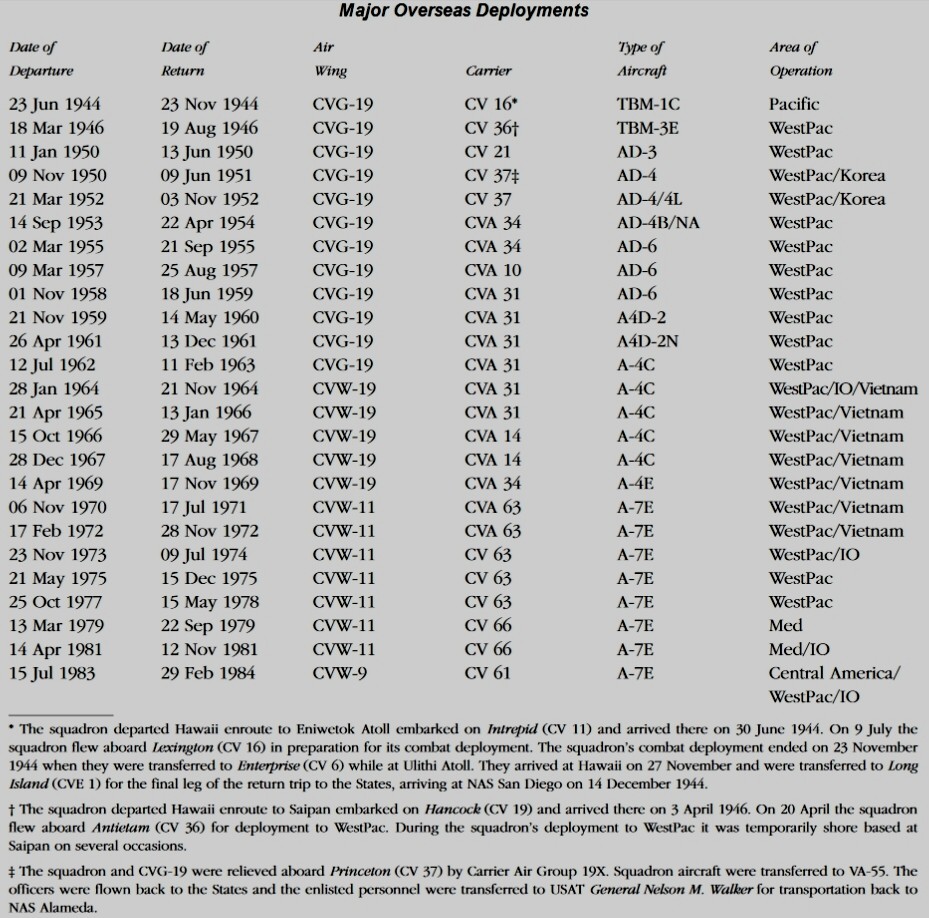 source: US Naval History & Heritage Command |
|||||||
|
|
|||||||
|
|
|||||||
| patches + more | |||||||
 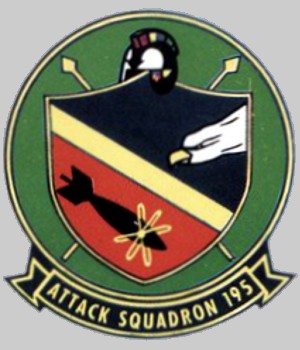
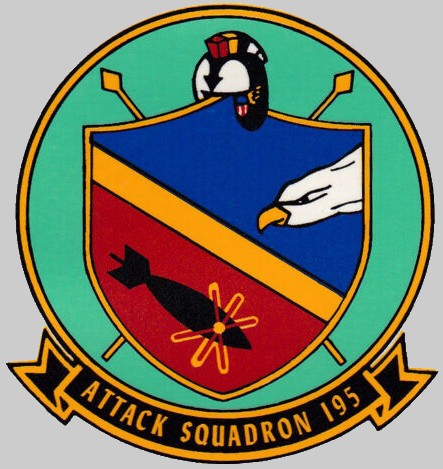 |
|||||||
|
|
|||||||
|
|
seaforces.org
|
US Navy
Air Units start page
| |
|||||||